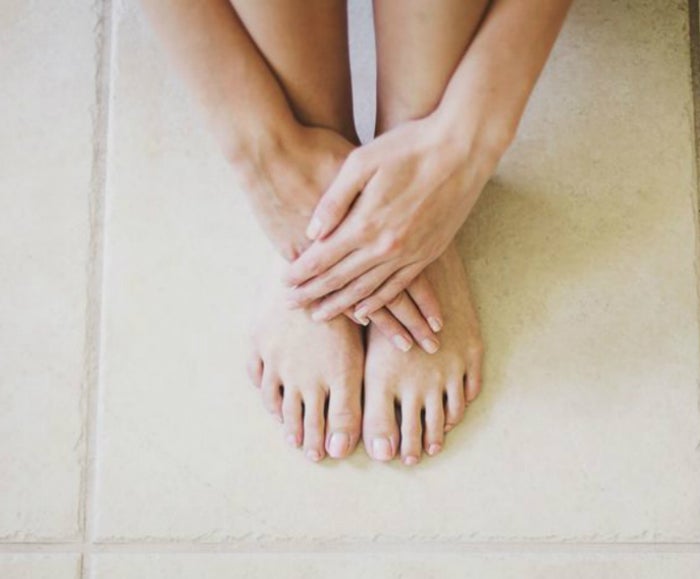

It's that stubborn callus on the bottom of your feet, or the plantar wart that develops after you forget your flip-flops at the pool—hyperkeratosis refers to the thickening of skin and takes on many forms. The symptoms you experience can serve as a clue that points to the underlying causes of your skin's reaction.
Corns or Calluses
You thought those shoes fit well at the store—but now that you've run around in them, you may notice calluses or corns cropping up on your feet. Corns are thickened spots of skin on the toes or top of the foot, and can appear as dull, rounded bumps. Calluses are thick spots on the bottom of the foot. Both are formed by constant pressure or rubbing, such as when you wear ill-fitting shoes. You may not notice any symptoms, but these spots can become painful if the skin gets too thick. The American Podiatric Medical Association cautions that corns and calluses can lead to serious problems in people with poor circulation, such as diabetics.
Thickened Skin
Sometimes hyperkeratosis is not brought on by shoes that rub you the wrong way but by chronic inflammation. Hyperkeratotic eczema develops as thick, scaly areas on the palms of the hands or the soles of the feet. The dry areas of thickened skin can appear grayish, and hyperkeratotic plaques on the palms can make it uncomfortable or painful to work with your hands. Combination therapies from your dermatologist may involve corticosteroids and moisturizers to comfort the parched skin.
Blisters
Hyperkeratosis can also be written in your DNA. The genetic condition can develop in babies as red skin and blistering. With aging, the blisters may go away and the skin thickens. Epidermolytic hyperkeratosis comes in two forms: one involving the palms and soles of the feet and the other appearing on different body parts. The thickened skin isn't scaly but may be darker in color, and can occur in areas where the skin rubs together such as on the joints, the neck or the head. The affected areas may also have an odor, because bacteria can flourish in these rough patches.
Red, Scaly Patches
Hyperkeratosis may also appear as a form of skin cancer: squamous cell carcinoma. This will develop as nodules of thickened skin or as red, scaly patches similar to psoriasis plaques. These lesions are more likely to appear on areas of the body that get the most sun exposure, such as arms and hands. They may bleed if bumped even lightly. See your doctor if you have an unexplained lesion like this that does not heal.
This article has been reviewed by board-certified dermatologist Dr. Emmy Graber.

Related Articles






